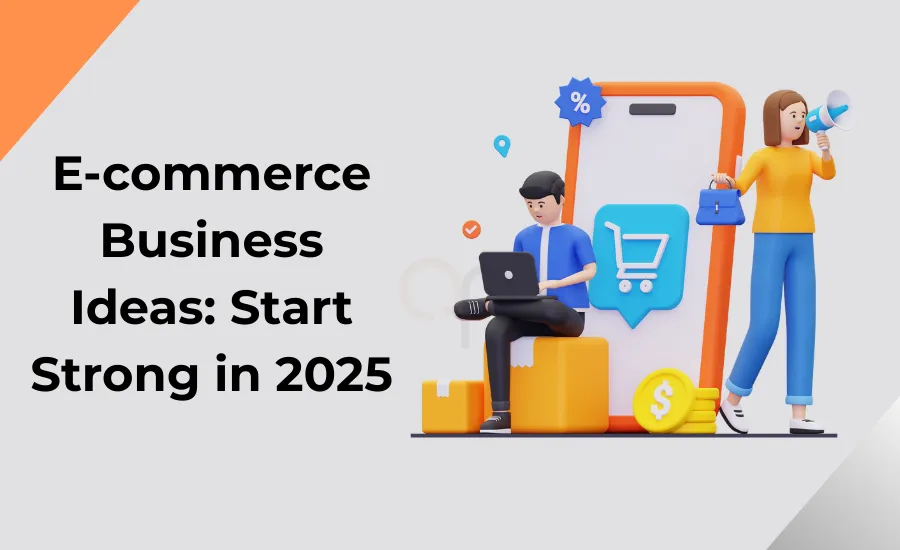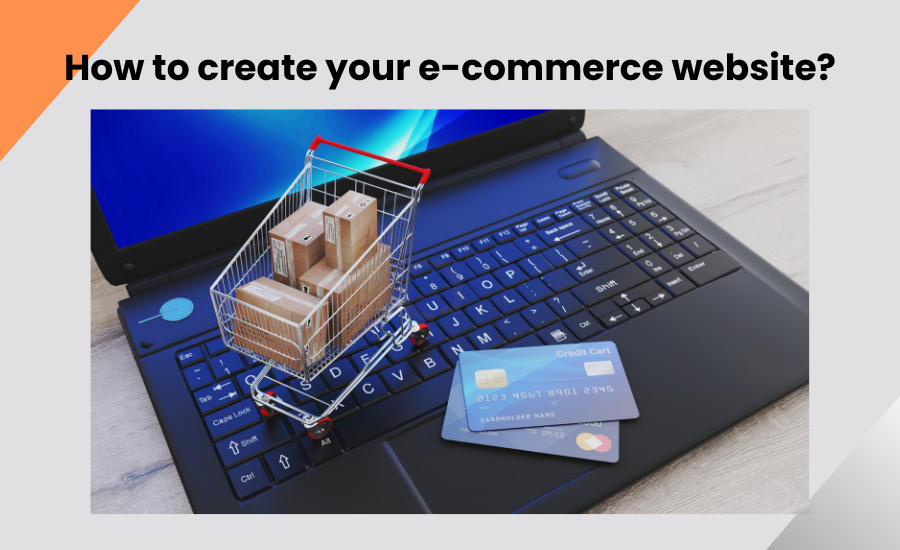E-commerce Business Ideas: Start Strong in 2025

An e-commerce business is a business that trades physical products over the Internet. It includes online interaction where people can survey an experiment on a storefront, place items in a digital shopping cart, and complete a purchase through secure payment gateways. Thus, e-commerce businesses range from tiny shops to huge online marketplaces, where several platforms reach people globally. In this blog, we will discuss e-commerce business ideas.
How to start an e-commerce business?
E-commerce is at its peak, so you’ll need to understand how to stand out because everyone can use IT skills today for their business. So there is competition among individuals to run their businesses because of their bright future. Here are a few steps: We discuss how to get started with our e-commerce business.
Step 1: Research e-commerce designs and decide what to trade
There are four basic types:
- Business-to-customer (B2C): A popular business design in which a business transfers to people anything from unique items to shoes. So, B2C modern can trade different modern things under one roof, like Walmart, Amazon, and Alibaba.
- In B2B, demand tends to be for buying things through a business.
- Customer-to-customer (C2C): C2C designs move to be an online business that combines people to change and trade products and services. Therefore, Online C2C businesses include Etsy, Craigslist, and eBay.
- Customer-to-business (C2B): With C2B, people trade their products and services to companies.
At the same time that you understand your business model, you'll also want to explain the delivery technique you'll use to divide your products or services.
- Direct-to-consumer (D2C): Trade your goods directly to people without the guidance of retailers or wholesalers.
- Dropshipping: Dropship businesses are fast and cheap to begin.
- Wholesaling: Buy goods at a discounted rate from a trader to sell on your website.
- White label: Put your name and brand on a collective product that you buy from a delivery service.
- Private label: Hire a producer to supply goods to be sold entirely by you.
Step 2: Write a business plan
Thus, this written document details your aims and direction for operations, finance, and marketing. So you can use it to get formulated and be used to attract hidden inquiries.
Do some visits to symbolize the present market landscape and competitors for your goods or services. Therefore, inform your target plan and how you might trade to hidden customers. So, plan the logic, involving when, where, and how you will proceed in the coming days.
Step 3
So, for those beginning white-label e-commerce businesses, the brand is particularly essential to the success of your business.
Selecting a business name can be a skill, but it demands a little thinking ability. Do your research to make sure it translates better according to the cultures, particularly if your goal is to go global.
Step 4: Register your business
Before you begin trading, you’ll need to register your business by selecting a legal structure, applying for a worker identification number, and gaining other licenses and permits, especially for your selected business design.
Once you’ve chosen a business name, consult your local Secretary of State’s website and confirm your business name is available. Thus, it is necessary for you to select this business.
Step 5: Design e-commerce trading website
With the inside work done and your business properly registered, the next step is to produce an e-commerce website. Thus, the website is the “storefront” for your business for visitors to arrive, see, and place products in their shopping cart.
Then, you’ll choose an e-commerce platform that perfectly suits your high frequency for producing and managing the online store.
WooCommerce: WooCommerce is an open-source connector that you can add on to begin trading on your WordPress site. It offers a wide range of e-commerce tools and is free to download, best for administrators with previous industrial experience.
How to create your e-commerce website?

After you’ve chosen an e-commerce platform, you can move forward with designing, optimizing, and introducing your online store. So you’ll decide on the template build, produce a wireframe, involve your goods and supply, and write descriptions to introduce your business. You can choose either WordPress, Shopify, Drupal, or any other CMS you wish for your website development process where you will list your products.
Do you want to hire our professional web developers to develop your e-commerce website: Contact Website Developer
Step 6
If you are a craftsperson, you’ll also want to create enough earnings to last the first few days. This could mean creating every size and color of a clothing item or producing around twenty of each clay pot design. The exact number will depend on your team’s capacity and your business approach, including the amount of traffic your website receives.
Tip: Start Up on an e-commerce marketplace
If you're just beginning, understand trading on an e-commerce marketplace like Amazon or Etsy. These progressive companies host thousands of traders with modern algorithms to show goods to the right people, which means you can rely on SEO and social media marketing.
Step 7: Launch and market your business
Blessing, once you have successfully driven the business, you can start guiding your metrics and key performance indicators (KPIs) as your business runs
It is wise to be ready with techniques in case anything goes wrong.
How much amount is required for an e-commerce business?
Beginning your own e-commerce business is a contribution that can produce acceptable profits, particularly if a large consumer base combines with your brand.
Here are a few costs to consider:
- Permits and Licenses: Your legal documentation, such as licenses and permits, will depend on your business type and your beginning to produce goods for your business.
- So you can download these platforms freely.
- Product inventory: Inventory might be your largest and most planned amount since you’ll wish to have a lot to trade, but don’t want to waste money on goods that won’t trade.
- Shipping: You may outsource the whole shipping process if you want to focus on the goods and other business processes.
Tips for starting an e-commerce business
The journey to creating a successful e-commerce business requires techniques, inspiration, passion, and a bit of luck. Thus, beginning a business can feel similar to the birth of a child—hard work, but extra rewarding. So here are some tips when you’re just starting:
- Begin small. If you’re a craftsperson, create an Instagram account and share simple modern patterns to generate interest. So design a website and a soft drive with targeted Facebook or Google ads. Then, move on with your business.
- Keep up with trends. Social trading is necessary to understand, as it was one of the largest trends, along with artificial intelligence, in e-commerce in 2023.
- Experiment with marketing. People do not wish to know about your business unless you express it. Thankfully, there are several ways to conduct A/B testing on platforms like Google Ads with some dollars before driving a big operation.
- Take advantage of multi-channel strategies and partnerships. Even though D2C trades are trending, your businessmen's aware of and trade their products very beautifully on such platforms as Etsy and Amazon. So, social marketing involves social media marketing, affiliates, and relationships with people.
Summary
In conclusion, the digital world is full of opportunities. So if you’re ready to study e-commerce business ideas, Start Strong in 2025 is your guideline to success. Therefore, stay fixed, act rapidly, and go on learning. Start strong, and make 2025 your whole year.